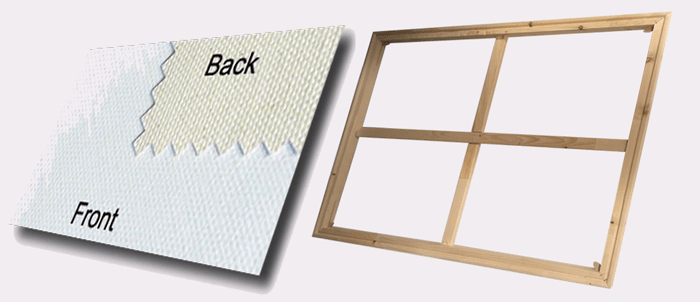Introduction: While pine, birch, and poplar are commonly used for gallery wrap stretcher bars, alternative wood choices can provide unique characteristics and aesthetics to the final artwork. In this article, we delve into different wood options and their suitability for manufacturing stretcher bars.
- The Appeal of Alternative Woods: While traditional wood choices offer excellent qualities for gallery wrap stretcher bars, alternative woods provide artists and manufacturers with exciting options. For example, hardwoods like oak and maple offer enhanced strength and durability, making them suitable for large-scale artworks. Exotic woods like mahogany or cherry provide rich tones and unique grain patterns, adding a touch of elegance to the finished piece. Additionally, eco-conscious artists may opt for sustainably sourced bamboo, known for its renewable and environmentally friendly properties.
- Considering Durability and Stability: When exploring alternative wood choices, durability and stability are essential factors to consider. Some hardwoods, such as oak and ash, are known for their exceptional strength and resistance to warping. These woods can withstand the tension exerted by tightly stretched canvases and provide longevity to the artwork. Additionally, engineered woods, such as plywood, offer enhanced stability and resistance to moisture, making them suitable for humid environments.
- Aesthetic Considerations: Artists often seek unique aesthetics for their gallery wrap stretcher bars. Alternative wood choices can provide a range of colors, textures, and grain patterns. Exotic woods like padauk or zebrawood offer vibrant hues and striking patterns that can add a dynamic element to the artwork’s presentation. Light-colored woods like beech or ash provide a clean and minimalist appearance, allowing the artwork to take center stage. Artists can select alternative woods that complement their artistic vision and enhance the overall aesthetic appeal of the piece.
- Sustainability and Eco-Friendly Options: As environmental concerns continue to grow, artists and manufacturers are increasingly opting for sustainable wood choices. Bamboo, for instance, is a fast-growing grass that can be harvested without causing deforestation. Its strength, stability, and eco-friendly properties make it an attractive option for those seeking sustainable alternatives. Reclaimed wood, sourced from old buildings or salvaged materials, offers a unique character while reducing the demand for new timber. By choosing alternative woods with sustainable practices in mind, artists and manufacturers contribute to a greener and more responsible art industry.
Conclusion: Exploring alternative wood choices for gallery wrap stretcher bars opens up a world of possibilities for artists and manufacturers. Whether it’s selecting hardwoods for strength, exotic woods for unique aesthetics, or sustainable options for environmental considerations, each alternative wood brings its own charm and character to the final artwork, elevating the overall presentation and appeal of the piece.
